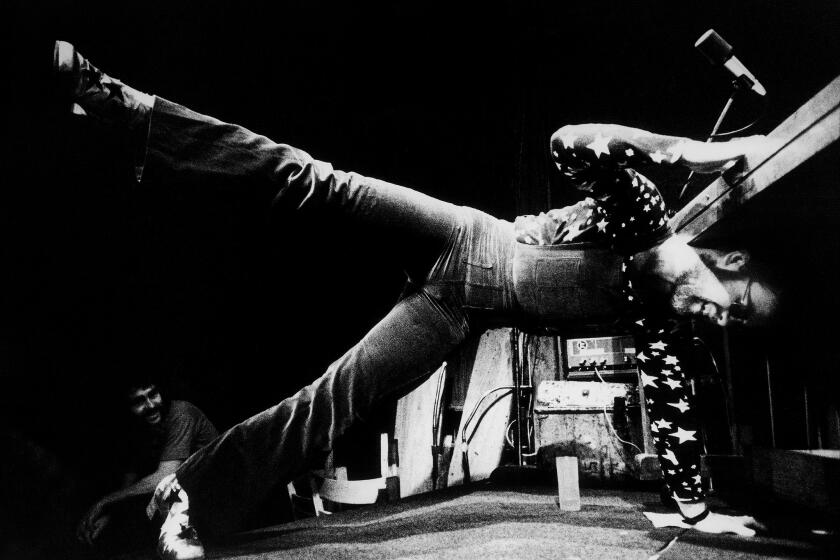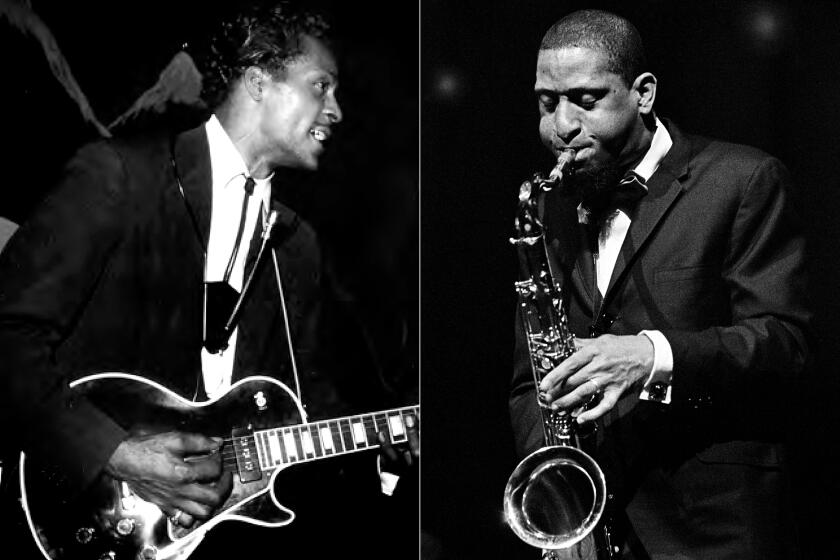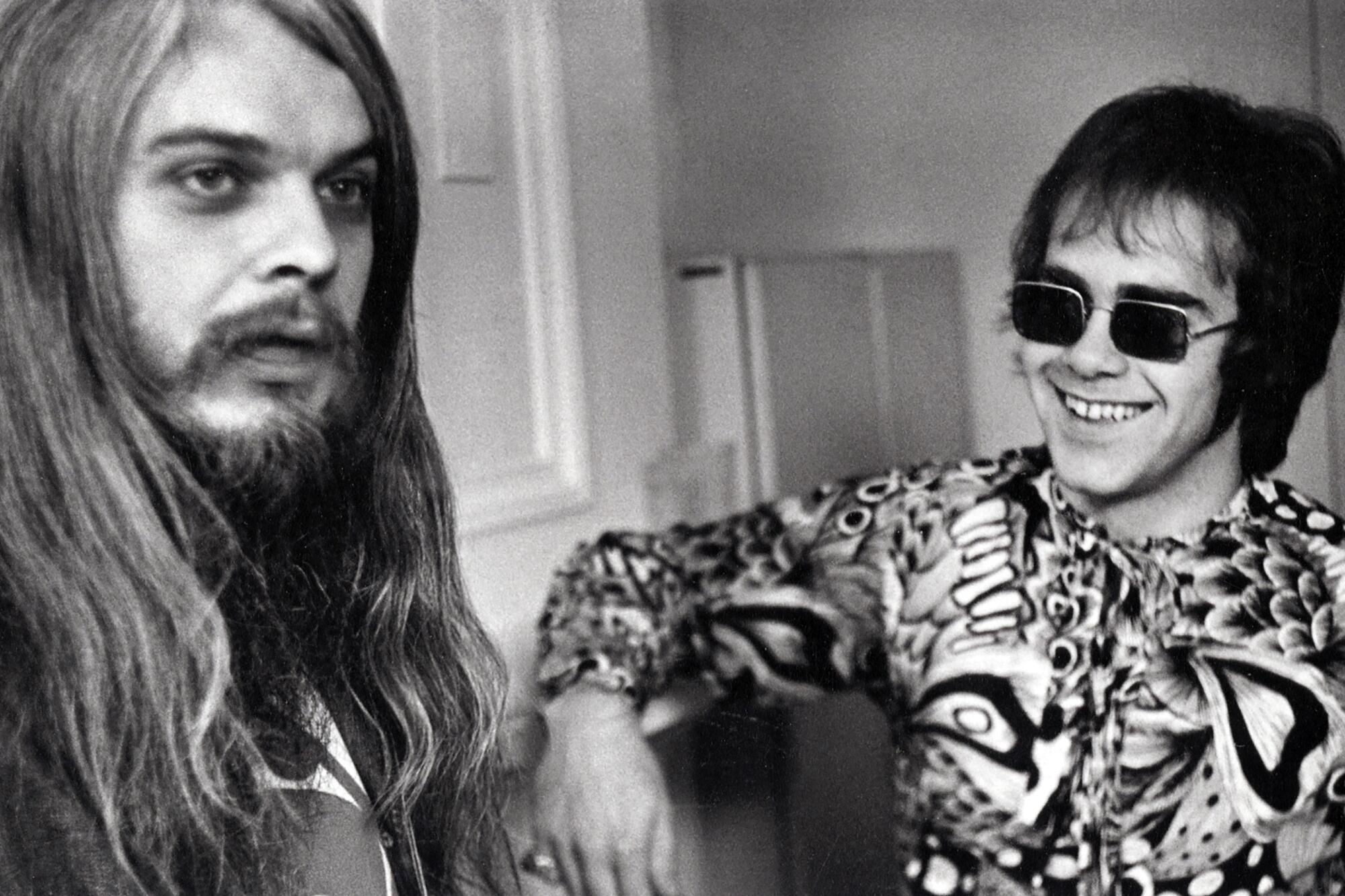
- Share via
Review
Leon Russell: The Master of Space and Time's Journey Through Rock & Roll History
By Bill Janovitz
Hachette, 592 pages, $31
If you buy books linked on our site, The Times may earn a commission from Bookshop.org, whose fees support independent bookstores.
A selective list of Leon Russell’s collaborators reads like a roll call of rock divinity: Jerry Lee Lewis, the Beach Boys, Ike and Tina Turner, the Rolling Stones, Joe Cocker, Bob Dylan, Tom Petty, Elton John. His debut album, released in 1970, featured George Harrison, Ringo Starr, Mick Jagger and Eric Clapton. He is credited with inspiring Willie Nelson to grow his hair long and embrace hippie counterculture. And yet, outside a circle of dedicated fans and music aficionados, Russell never became a household name like his contemporaries — which seems to be exactly how he’d designed it.
Throughout his six-decade career as a musician, songwriter and composer, Russell gave few interviews; kept friends, family and collaborators at arm’s length; and was notoriously brooding and taciturn. Hailed as the “master of space and time,” Russell spent the latter half of his career struggling (with varying degrees of effort) to stay relevant and out of debt. A life this distant and inscrutable doesn’t easily lend itself to dramatization, which may help to explain why it is only now, six years after his death and 50 years past the height of his fame, that we have the first comprehensive biographical treatment. The figure who emerges at the end, however, remains every bit as enigmatic.
Francesca Royster’s “Black Country Music: Listening for Revolutions” is an incomplete but important, often lyrical study of a growing subgenre.
“Leon Russell: The Master of Space and Time’s Journey Through Rock & Roll History” by musician and author Bill Janovitz is the most ambitious effort yet to peel back the curtain on one of the most gifted, least understood rock artists of the 20th century.
Born Claude Russell Bridges in Oklahoma in 1942, he showed an early genius for piano; by 14 he was already gigging at Tulsa nightclubs and briefly toured as the opening act for Jerry Lee Lewis, whose scorching Pentecostal playing style made an impression on the young Russell. In 1960, he moved to Los Angeles and found steady work as a studio musician, playing on recording sessions for such luminaries as Frank Sinatra, Ray Charles, Herb Alpert and Barbra Streisand. He and fellow Southern transplant Glen Campbell were part of the now-legendary Wrecking Crew, who were responsible for some of the biggest hits of the decade and formed the core of Phil Spector’s famed Wall of Sound.
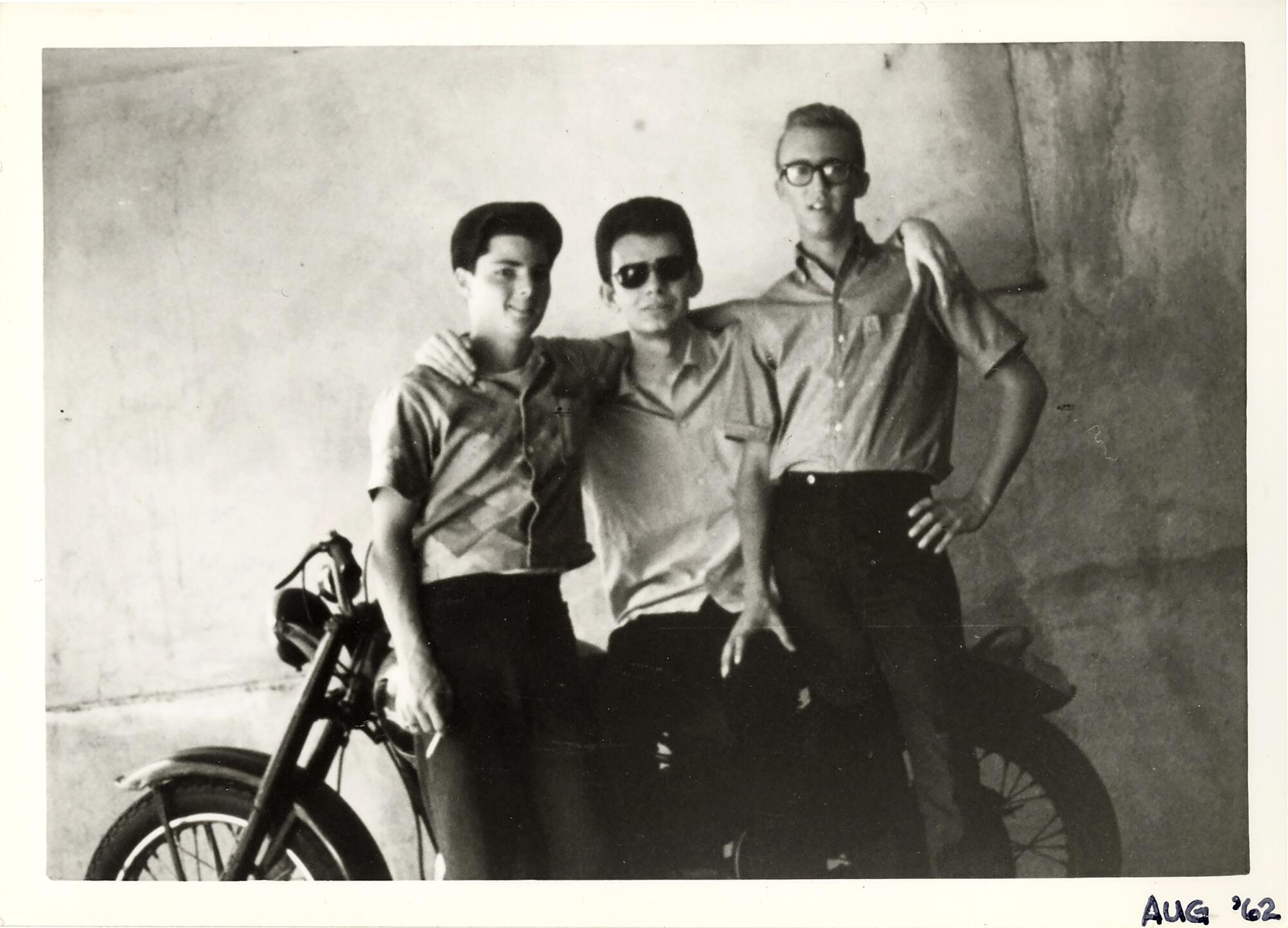
Skyhill Studio — the four-bedroom house and home recording studio Russell purchased on Skyhill Drive in Studio City — hosted L.A.’s best session musicians, fellow Tulsa expats and such international superstars as Harrison, Starr and Clapton. The house also was a den of bacchanalia; drugs and orgies were as common as jam sessions. At the center of it all, like a reclusive king in his sun-drenched court, was Russell: shaggy hair, top hat, flowing beard and faraway eyes behind reflective sunglasses.
By the beginning of the 1970s, Russell had all the makings of a bona fide rock god. The success of Cocker’s “Mad Dogs and Englishmen” tour in 1970 established Russell as an inimitable composer and arranger; his original composition “A Song for You” (from which his “master of space and time” nickname derived) would be covered by Donny Hathaway, the Carpenters, Aretha Franklin, Ray Charles and many others. His sophomore album, 1971’s “Leon Russell and the Shelter People,” went gold in the U.S. — the first of five albums to reach that milestone before the decade was out. (His sixth wouldn’t come until 2010, after longtime devotee Elton John dragged him out of relative obscurity for their collaborative album, “The Union”). But as Janovitz shows in his book, Russell had an infuriating habit of squandering opportunities, turning friends into enemies and seemingly doing everything he could to torpedo his career and sabotage his legacy.
When Elton John flew to Los Angeles to make his U.S. debut at the Troubadour on Aug. 25, 1970, the prospect of a visit to America was so tantalizing to his British pals that many accompanied him.
Rock biographies typically follow a familiar formula: the road to success, the fame and riches, a spectacular crash and burn (the inevitable result of drugs and hubris) and — if he or she is lucky to survive this ordeal — the long and heroic road to recovery, culminating in a late-in-life renaissance. “Leon Russell” solidly hits the first two stations of the cross, but Russell didn’t so much crash as slowly fizzle away.
The causes: poor artistic, business and personal decisions. He sank large sums of money into houses and old cars, only to quickly abandon them; seemed to disdain performing; became curiously obsessed with the troubled actor Gary Busey. Russell also quietly suffered from mounting health problems and an all-around cantankerousness, possibly stemming from autism and/or undiagnosed bipolar disorder. These tidbits make for some drama, though perhaps not enough to fill out 600 pages.
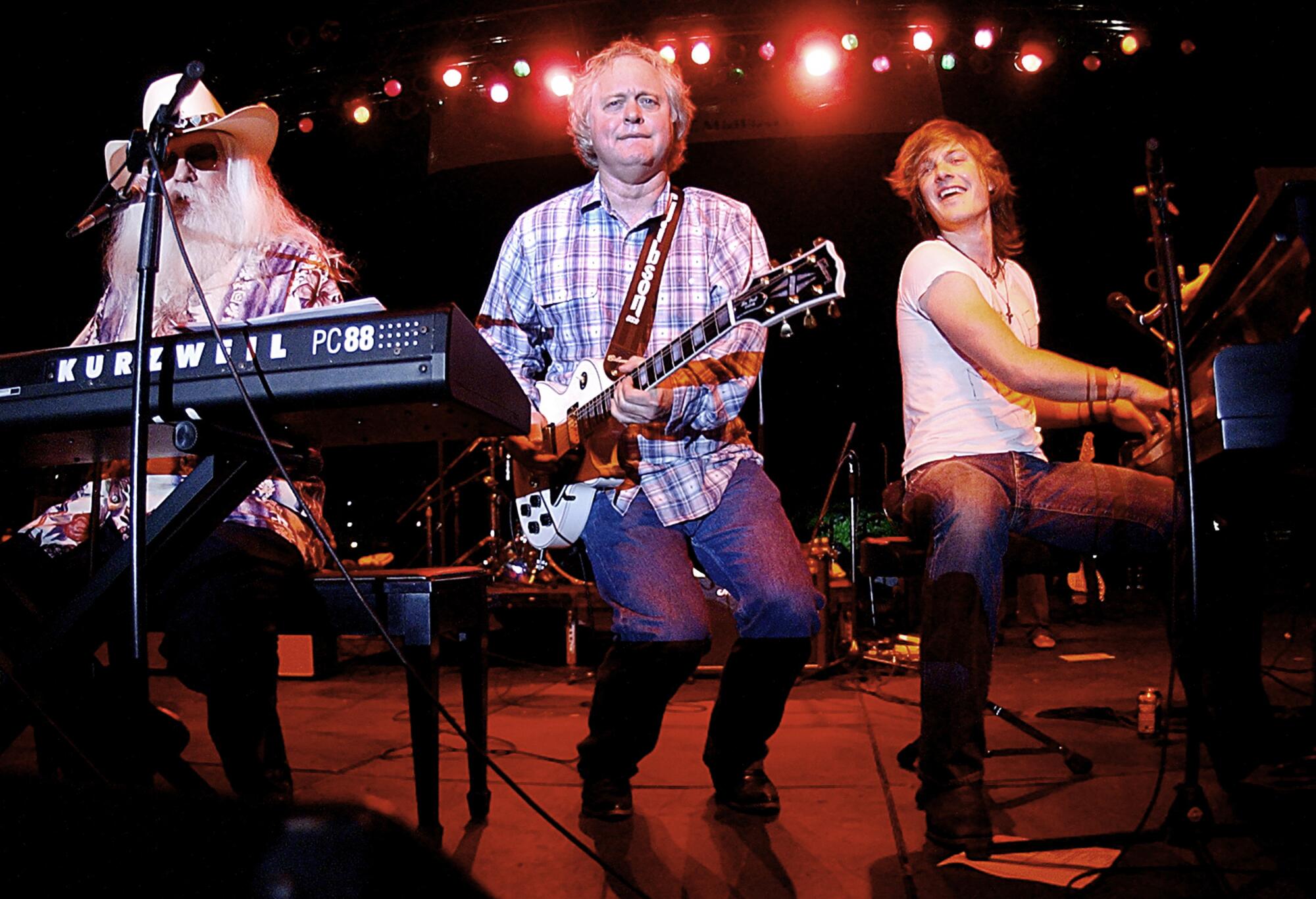
Janovitz, author of two books on the Rolling Stones and a musician in his own right — a founding member of ’90s-era alternative rock band Buffalo Tom — writes as a rock enthusiast addressing fellow rock enthusiasts rather than casual readers. He draws from scores of personal interviews with titans as well as otherwise anonymous session musicians, recording engineers, business partners, friends, family and lovers. Quotes, musings and reminiscences abound, leaving the impression that “Leon Russell” might have worked better as a straight oral biography.
Indeed, the author rarely interrupts the flow of such rock trivia as recording sessions, touring dates and sidemen. He offers little context on the turbulent times in which Russell and his contemporaries were creating and perfecting their art, and he seems reluctant to look too critically at Russell’s more repellent behavior.
“Saxophone Colossus: The Life and Music of Sonny Rollins” and “Chuck Berry: An American Life” illuminate Black musicians and the legacy they left us.
As a Southern-born white man who’d become rich and famous performing music heavily influenced (or appropriated) from such Black art forms as gospel, blues and rock ‘n’ roll, Russell could seem oblivious to racism in his own orbit. The most disturbing example came after he married his backup singer, a Black woman named Mary McCreary, who faced racist abuse night after night from Russell’s audiences while he declined to defend her.
“Leon dealt with these racists in his own indirect way,” writes Janovitz. Which seems to mean, as singer Maxayn Lewis unhelpfully explains, “just let[ting] the music speak for itself.”
This might be the best advice on how to appreciate the subject of this biography. While it will satisfy Russell’s legions of loyal fans — the self-styled “LeonLifers” — and rock biography completists, what matters most in the end is the music, which at its best remains beautiful, exciting and magical.
Holley is a journalist and author of the forthcoming book “An Amerikan Family: The Shakurs and the Nation They Created.”
More to Read
Sign up for our Book Club newsletter
Get the latest news, events and more from the Los Angeles Times Book Club, and help us get L.A. reading and talking.
You may occasionally receive promotional content from the Los Angeles Times.

